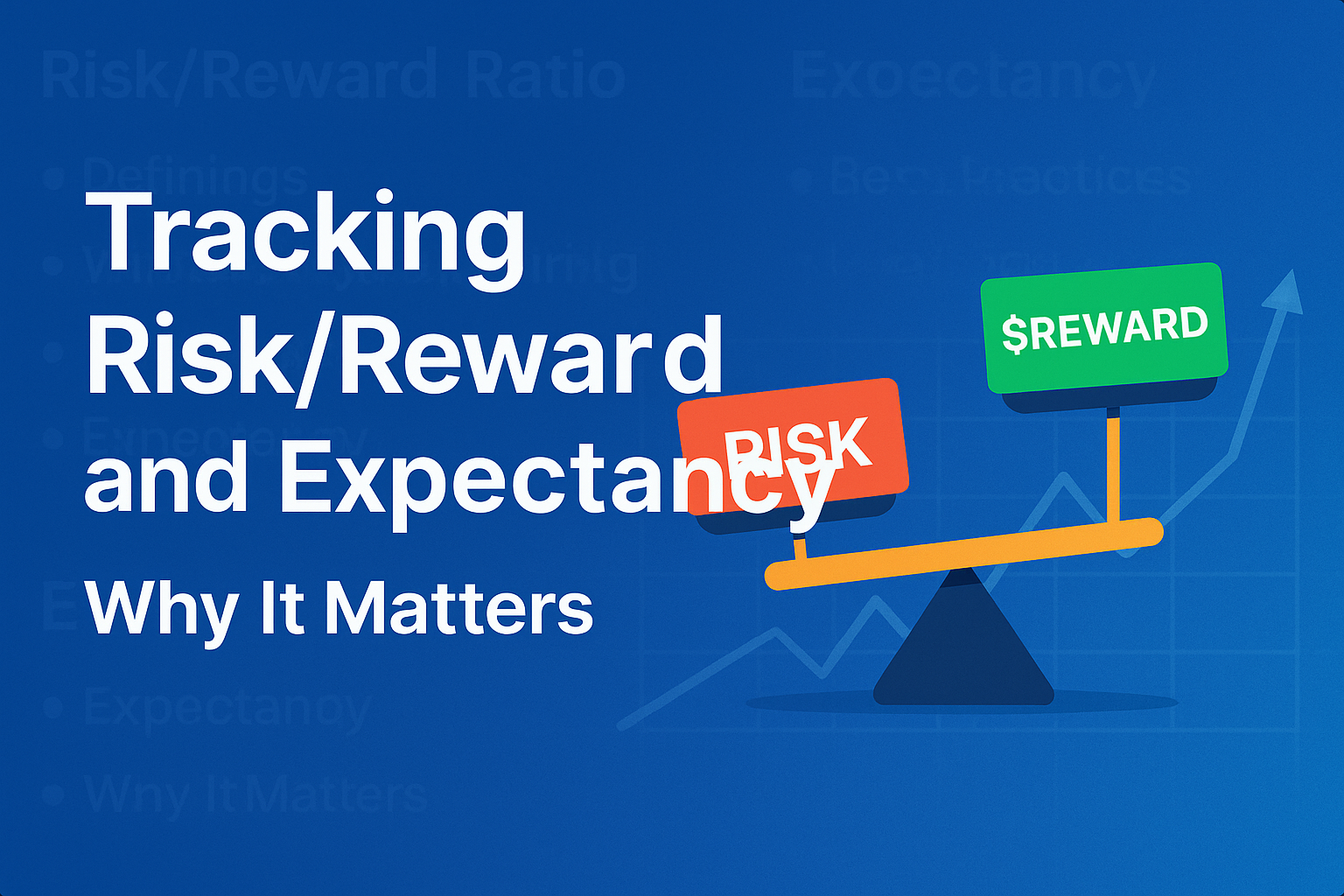Tracking Risk/Reward and Expectancy: Why It Matters
Why Just Looking at Win Rate Can Mislead You
Too many traders chase a high win rate while ignoring the bigger picture: risk/reward and expectancy. A 90% win rate doesn’t matter if you lose $200 every time you’re wrong and make $20 when you’re right. The true measure of your trading edge lies in expectancy — the average return you can expect per trade.
Understanding the Risk/Reward Ratio
The risk/reward ratio (R:R) measures how much you stand to gain compared to what you’re risking on a trade. For example, if you risk $100 with a target of $300, your R:R is 1:3.
Why It Matters:
- It defines your minimum win rate for profitability. A 1:2 R:R means you only need to win 34% of your trades to break even.
- It disciplines your exits and position sizing. You learn to set stops and targets based on math — not emotion.
- It scales with strategy. You can test if your trading approach thrives on small wins or big swings.
What is Expectancy in Trading?
Expectancy is the average amount you expect to win (or lose) per trade over time. It combines your win rate, average win size, and average loss size into a single metric.
Formula:
Expectancy = (Win% × Avg Win) − (Loss% × Avg Loss)If your expectancy is positive, your strategy is profitable over time. For example:
- Win rate: 40%
- Average win: $250
- Average loss: $100
Expectancy = (0.4 × 250) − (0.6 × 100) = 100 − 60 = $40 per trade
Why Most Traders Ignore These Metrics
Because they’re too focused on individual trade outcomes. They treat every win or loss emotionally instead of seeing the big picture. But if you want consistent performance, you must think in probabilities — not perfection.
How Option Logix Makes It Easy
Option Logix automatically calculates:
- Your average risk/reward ratio per strategy, ticker, and setup
- Overall expectancy (total and segmented by month or strategy)
- Historical vs. projected performance based on your current edge
Using AI, we even forecast your expected growth curve if your current stats continue — or suggest adjustments to improve them.
Common Pitfalls Traders Fall Into
- Overestimating reward potential: Ignoring realistic exit points and chasing price.
- Letting losers run: Failing to respect your stop-loss and distorting R:R ratios.
- Focusing on win % only: Forgetting that a strategy with a 25% win rate can still be profitable with 1:5 R:R.
Best Practices for Managing R:R and Expectancy
- Set stop and target levels before entering trades.
- Track every trade’s planned and actual R:R — Option Logix does this automatically.
- Review expectancy weekly. If it’s negative, pause trading and review your setup logic.
- Combine R:R with emotional journaling: did you exit early or deviate from plan?
Using Expectancy to Optimize Strategy
With enough data, you’ll notice which setups have the highest expectancy — not just the most wins. Option Logix lets you sort and filter by expectancy to rank strategies, days of the week, or expiration ranges (DTE). This turns vague journaling into strategic refinement.
Final Thoughts
Every professional trader lives by the math of risk and expectancy. It’s not about being right — it’s about being profitable when you’re right and limited when you’re wrong. With Option Logix, you don’t need a spreadsheet or calculator. You just need to trade, log, and review.
Start using expectancy to guide your trades — not your feelings.
Create your free Option Logix account to track R:R and expectancy automatically and turn probability into performance.


